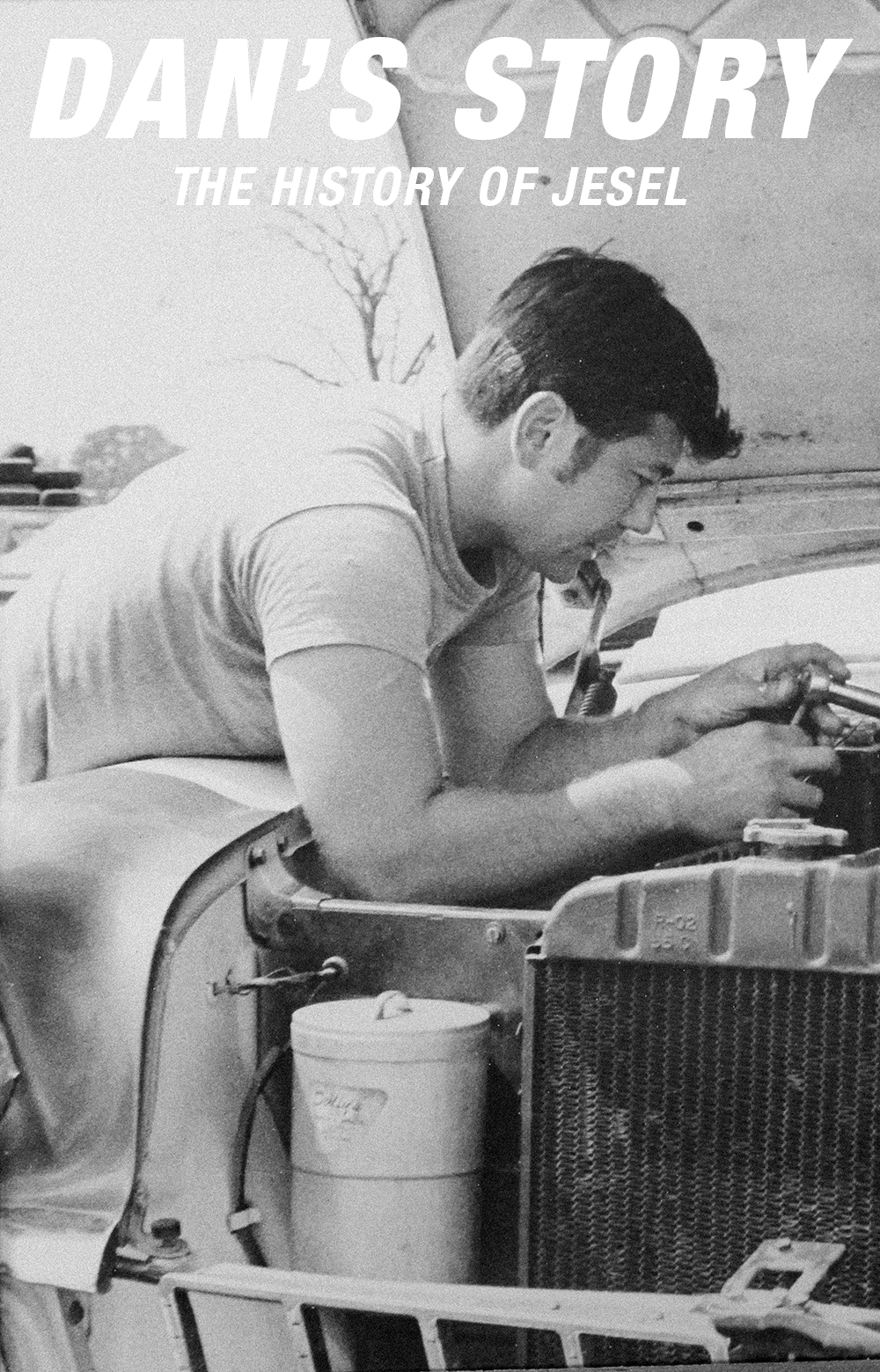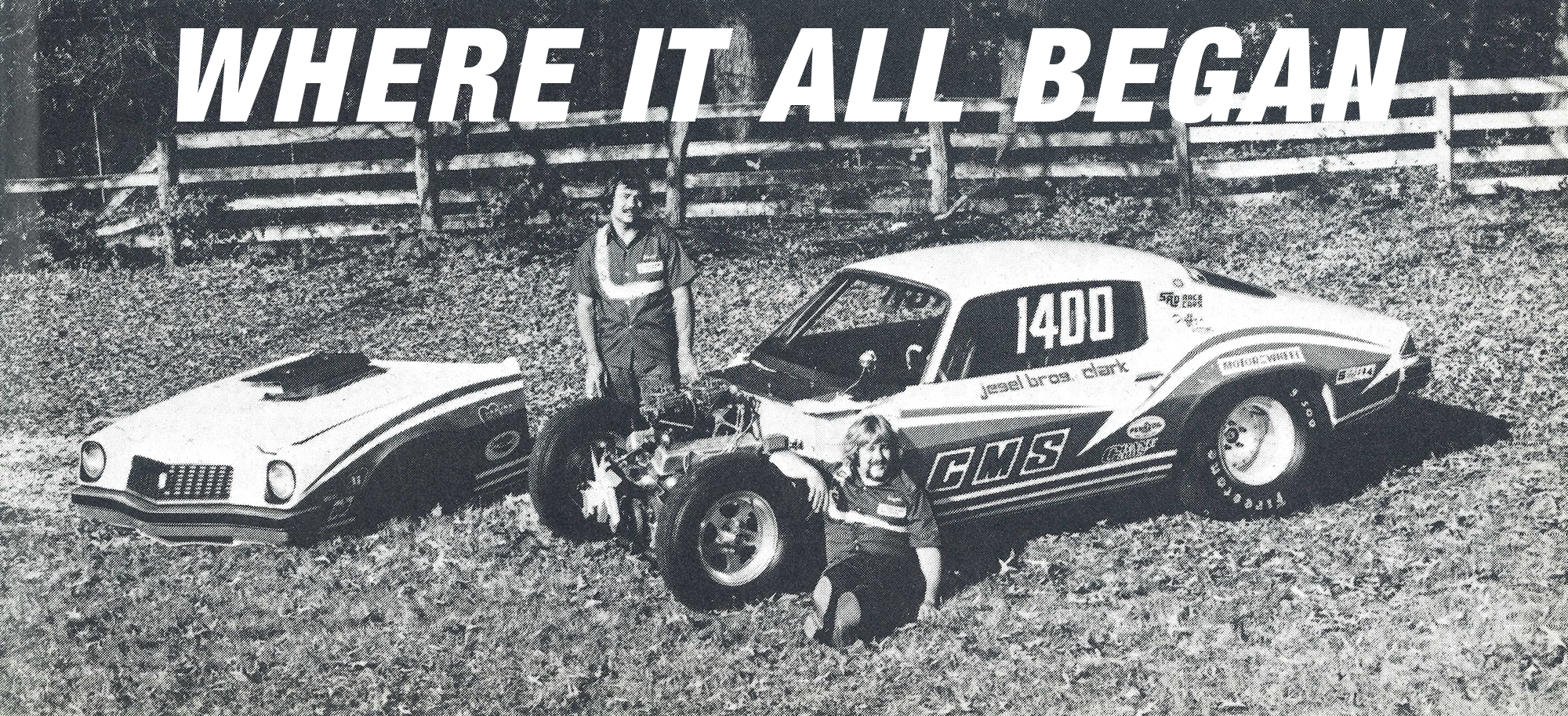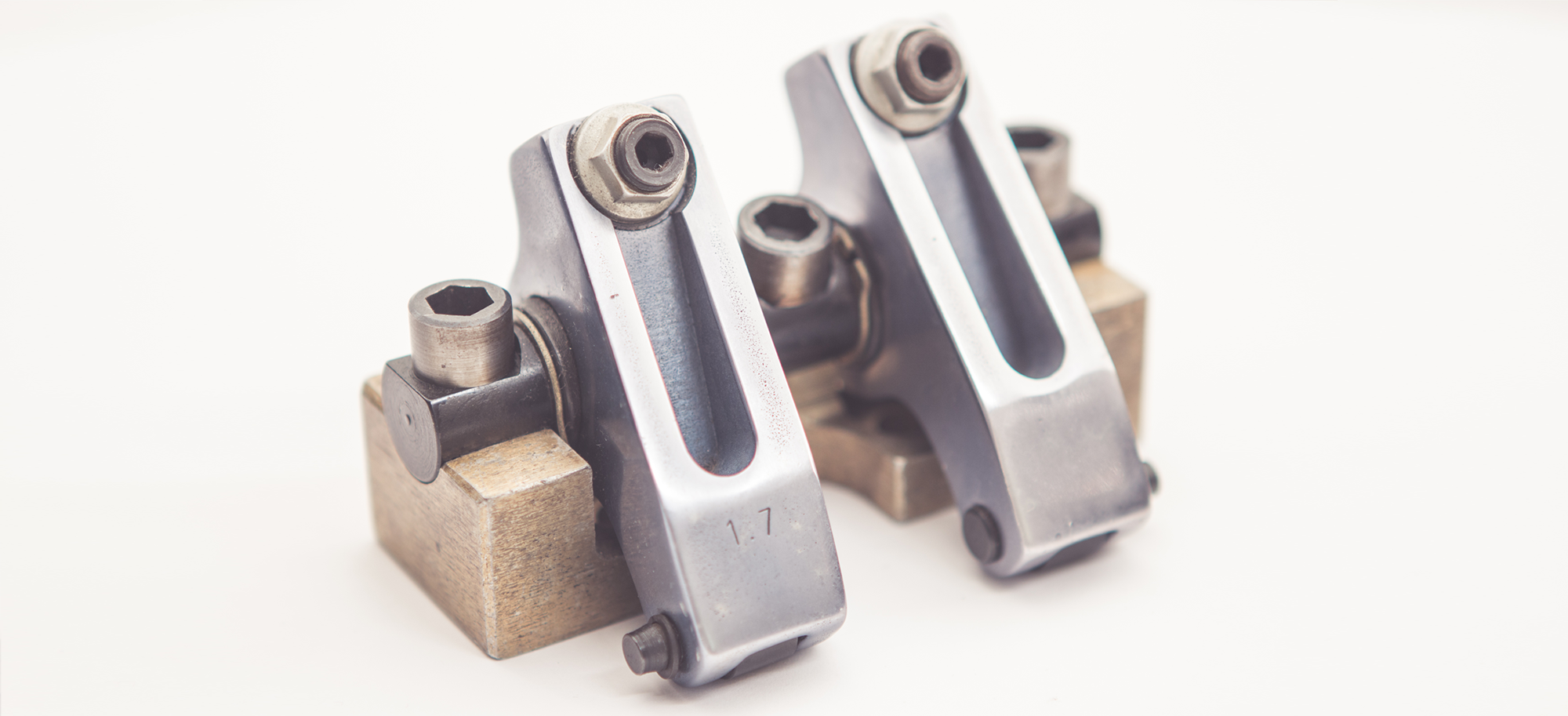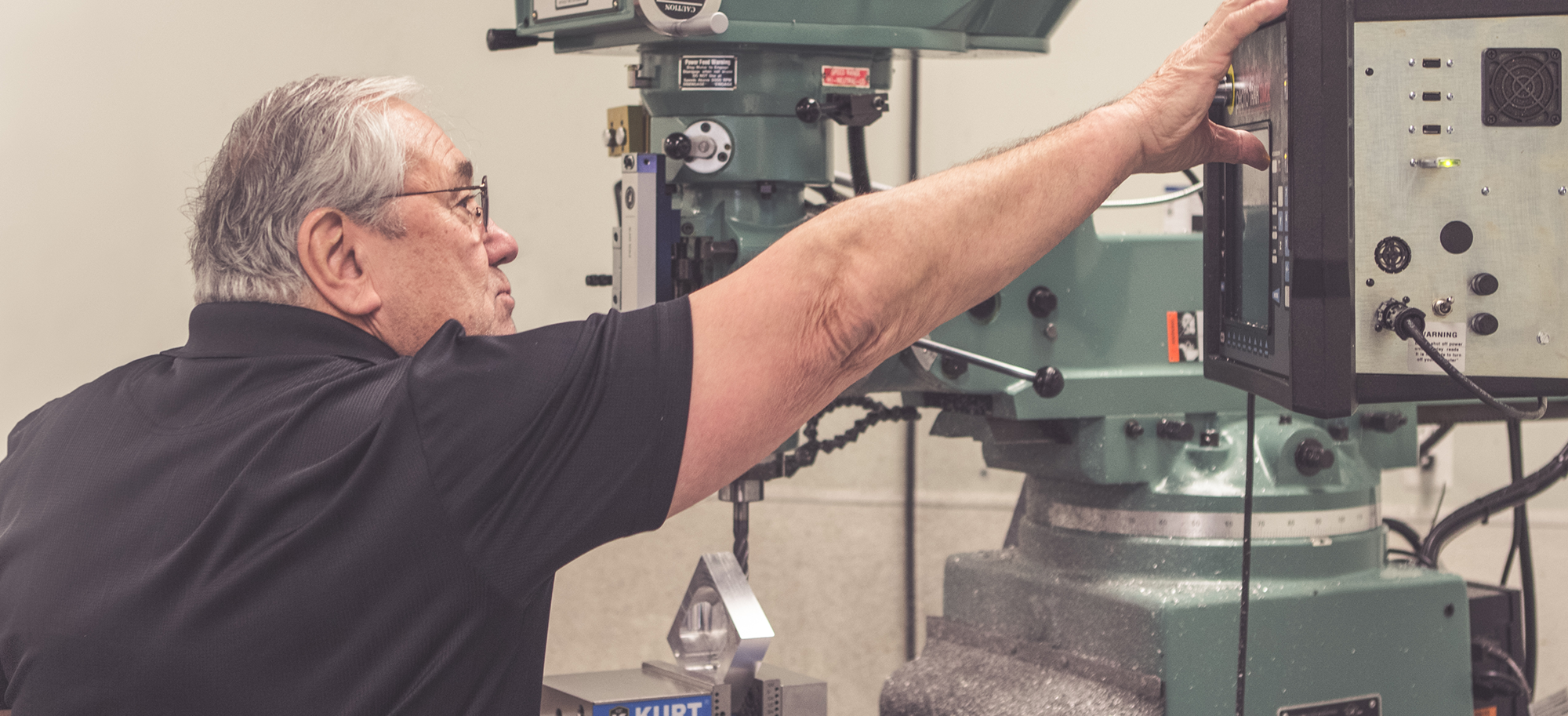Dan's Story - The history of Jesel

You have to know where you've been, to know where you're going...
Jesel Valvetrain Innovation just celebrated its 35th anniversary as the premier provider of valvetrain products to the racing community. This success story is due to the vision and drive of its founder, Dan Jesel, who is one of those rare people with the ability to accomplish great things while making it look easy. But what Dan and Jesel Valvetrain Innovation have accomplished over the last 35 years is anything but easy – they have carved out a reputation of delivering superior valvetrain components that excel under the most demanding racing conditions. Venues such as the 24 Hours of Le Mans, NHRA Top Fuel, Funny Car and Pro Stock, NASCAR Sprint Cup, Xfinity and Camping World Truck are Jesel’s proving grounds. With countless wins and championships to its credit, Jesel never lets up. Recent products such as Jesel Cartridge roller lifters, billet tool steel cam cores, and dual-plug front drive distributor kits secure Jesel’s position on the cutting edge of race engine development.
A lot has changed at Jesel Valvetrain Innovation over the past 35 years. It has grown from a 2,000 square foot back shop with a single manual milling machine to over 65,000 square feet of air conditioned manufacturing space complete with spotless epoxy coated floors. The hospital-like atmosphere features a full engineering department with engineers doing FEA component analysis, while others generate cad files that input directly into the rapid prototype printing machines. A concept can be transformed into a working prototype in a matter of hours. Many of the prototypes go directly for testing on one of Jesel’s two Spintron machines. Jesel also has a full in-house dynamometer lab that can evaluate components in actual race engines before they are released for production.
Then there is the “elephant” in the room – 35 CNC machines, including multi-pallet, multi-axis and multi-spindle machines, that eliminate multiple fixtures and setups that detract from dimensional accuracy. The finely finished components (some with surface finishes down to 1 RMS) are then held in an assembly area until the actual order is processed. These dedicated assembly areas feature sophisticated machines that sort and load needle bearings into roller lifters – work too precise for human hands with hand-held measuring devices. Due to the custom nature of Jesel’s valvetrain components, most parts are built to suit customer/sales specifications. The assembly process is very quick and efficient preventing slow-moving inventory from building up. No matter how big or involved an order is, Jesel has some of the shortest delivery times in the racing industry.
Several other departments dot Jesel’s 65,000 square foot landscape. They include an in-house metallurgical lab that checks all raw materials as they come into the plant. Most important is the sales area that is staffed with extremely knowledgeable sales people that work directly with customers to make sure they get exactly what they need for their particular application. Customer service extends to direct support at the racetrack for major races. Approximately 10 years ago Jesel added an in-house graphics department that produces all of its advertising, promotional and marketing materials. The most recent department added at Jesel is the Custom Shop that does Jesel’s prototype work and also takes care of machining heads and blocks for customers who want to be sure the work is done right.
So how did Jesel reach the point of producing more than 550 different shaft rocker kits, in excess of 20,000 roller lifters per year, manufacturing belt drives and distributor drives for over 30 popular engines, oversize billet camshaft cores, cam bearings, motorcycle valvetrains and more? Jesel Valvetrain Innovation’s success and standing in the racing community is due to Dan Jesel’s vision and unrelenting drive to be the best. His focus on the task at hand is unwavering. A good example is the nine years of R&D he invested into his first roller lifter design before he sold a single lifter. Dan has assembled a staff of very talented people and put operating procedures in place that handle the day-to-day operations seamlessly. He treats his employees like family and has a genuine concern for their well-being and job satisfaction. This process-driven organization allows Dan to focus on the R&D aspects of new product development and the time to stay in close contact with the racers, engine builders and crew chiefs. They provide him with valuable feedback about Jesel products and the opportunity to discuss solutions for problems they may be having.

Dan and Wayne Jesel with their Competition Machine Services Camaro in 1974.
The journey for Dan Jesel started many years ago when his father gave him a Model A pickup and a young Dan Jesel took it apart to see what made it tick. It wasn’t long before Dan swapped in a Ford Flathead V8 and his quest for horsepower and speed was ignited. Today, it burns in him as passionately as it did when he was a young man.
While the Model A piqued Dan’s interest in all things mechanical, and whetted his thirst for speed, his second car, a 1958 Chevy with a small-block V8 opened his eyes to the real power potential locked away in the small-block Chevy. He did the traditional modifications of the day – a Duntov “097” cam, 2x4 intake manifold and he milled the heads .125”. He installed a 4.56 rear gear and while most street racers were opting for 4-speeds, Dan, understanding the small-block’s appetite for gear multiplication, opted for a 2.97 first gear ratio 3-speed, and was rarely beaten by stoplight challengers.
But if you are serious about performance, there is only so much you can do on the street, so Dan built a dedicated racecar – a C/Gas ’55 Chevy. It too was pretty typical of the day with a factory 365hp 327 Chevy short block that cost just $327 from the dealer and was equipped with a set of ported heads and 409 carbs. Dan campaigned the car quite successfully for a year, but noticed the action and attention of NHRA class racing was shifting. Junior Stock racing was becoming a pretty heated class and Dan became involved with his younger brother Wayne and Tony Masari’s G/SA ’56 Chevy Sedan Delivery dubbed “YOO-HOO-TOO” after the popular east coast chocolate drink. The car soon became the NHRA national record holder in 1967 with Jesel power.
Dan also dabbled with big-block Chevy racecars too. He campaigned a ’66 Chevelle NHRA SS/D car that had a factory 375hp, 396 cid engine. It did very well running 11.6s @121mph. However, a transition was taking place. Dan was turning the driving and car-building chores over to Wayne who was really good at it, and Dan focused in on refining his small cubic inch engine combinations for maximum horsepower. Setting records with 300 cubic inch engines in NHRA’s Comp Eliminator classes required extreme rpm and before long Dan was up to his neck in the valvetrain development that became the genesis for Jesel Valvetrain Innovation.
Along the way Dan learned about how the speed equipment retail sales model worked when his shop was located behind Duffy’s Performance, a specialized speed shop for local New Jersey racers and mail-order business across the country. Duffy sold the parts, and Dan built the engines and installed the race parts on customer’s cars. After a few years Dan moved on to work for Manley Performance Products. He worked for Manley part time and rented space from them to run his engine building business under the banner of Competition Machine Service (CMS). Working at Manley gave Dan a chance to see how a large speed equipment manufacturing plant was set up, information that would later prove valuable.
Around 1972 Dan moved CMS to the back of a body shop in Freehold, New Jersey. His following of loyal racers continued to grow along with the list of CMS engines in the record books – C/MP, D/SR and even a 427 big-block ’66 Biscayne were rewriting the NHRA record books. In 1974 Dan and Wayne built a ’74 Camaro D/Altered car that set the national record several times. It was a very sophisticated car for the time in Competition Eliminator with a full SRD Pro Stock chassis and CMS plastered on the door.

The original blue Jesel Shaft Rockers - 1980.
In the late ‘70s Dan discovered that the only way to build a reliable high rpm valvetrain for the small block Chevy was to remove stud rockers from the equation and to create a shaft rocker setup. It not only allowed him to move the rocker pivot point wherever he wanted, it also enabled him to set the rocker height to optimize the valvetrain geometry. Now he just had to figure out was how to build the shaft rocker systems. Ed Iskenderian of Isky Cams sold Dan a few 12-foot bars of aluminum rocker arm extrusion, and that put Dan on his way to being in the valvetrain business. That was 1980 and from that time forward Jesel’s shaft rocker systems proved to be an essential part of any serious small-block Chevy race motor, and the business began to grow by leaps and bounds.
Jesel Valvetrain Innovation quickly outgrew its shop space, so Dan moved to a nearby industrial park with triple the floor space and purchased his first CNC machine, which he still runs today. Jesel’s shaft rocker systems were continually refined and new models added for big-block Chevys and other popular engines that came from the factory with stud rockers.
Around 1982 Dan was reading an industrial magazine and saw an ad for Uniroyal drive belts. After seeing a Cosworth Vega many years earlier, Dan wanted to build a belt drive setup for an OHV pushrod V8. He made a trip to Uniroyal and it wasn’t long before Jesel was building and selling belt drives. Dan invented the first pushrod V8 racing belt drive more than 34 years ago and Jesel is still the leader in belt drives today.
Dan’s next project, started in 1989, would not see the light of day for nearly nine years. But when the Jesel Keyway Roller Lifter was released in 1998 it became the industry standard for reliability and performance. Where traditional roller lifters retained small-diameter bodies and small rollers, the Jesel Keyway lifters came in a variety of larger body and roller diameters making them stronger and more versatile. Also, traditional roller lifters had a link-tie-bar alignment device that not only added weight to the lifter, but friction as well. The Jesel Keyway Lifter eliminated the tie-bar and used a pin on the lifter body guided by a slot in a bronze lifter bushing. Jesel now manufactures five different styles of roller lifters in various sizes: Keyway, Dog-Bone, Tie-Bar, Sportsman Solid Body, and the latest wheel-guided Cartridge Roller Lifters. Each has its unique applications, but they all share the same materials, manufacturing processes, tolerances and that unbeatable Jesel reliability.

Dan Jesel in his speciality shop.
By 1994 Jesel had moved into a larger 44,000 square foot building in the Lakewood Industrial Park to handle the large shaft rocker and belt drive production demands, plus the on-going roller lifter testing and development. Along the way, the lucrative drag racing market was almost dwarfed by the popularity and demands of the NASCAR race teams. Jesel became the go-to valvetrain supplier for NASCAR, NHRA Pro Stock and Comp Eliminator, and Le Mans and Daytona 24 Hour endurance racers. By '07 Jesel expanded again, adding additional floor space and numerous CNC machining centers.
Today, the new products and developments come at a fast and furious pace, including rocker kits and roller lifters for Top Fuel and Nitro Funny Cars, cam followers for OHC engines and mammoth tool steel cam cores with clamshell-style bearings. The newest Modular Roller Lifters are directed at special aftermarket and billet blocks that can accept the “cartridge”-style lifter pair. If there is a failure of any kind a lifter pair can be replaced at the track in a matter of minutes. It also allows the engine builder to relocate the lifters for pushrod port clearance in the heads.
When Dan reflects on the past, he is somewhat amazed at how far Jesel Valvetrain Innovation and the production 2V pushrod V8 race engine have come. 11,000rpm 500cid Pro Stock engines with 1350-pound valve springs and 10,000hp Nitro Top Fuel engines with crushing cylinder pressure could never have been dreamed of in 1980. Thanks in large part to Jesel Valvetrain Innovation, those levels of performance are now commonplace. It’s hard to predict what the next breakthrough for the internal combustion engine will be, but you can be certain that Jesel will be at the forefront of any new developments.
